 |
| TSS Manuka berthed next to Princes Wharf, Auckland, c.1909. Sir George Grey Special Collections, Auckland Libraries, 35-R35. |
What do a Latvian anarchist, the Wobblies, ham and eggs, the Military Service Act, and The Australian Communist have in common? The TSS Manuka, a 4,505 tonne, twin screw passenger ship originally owned by the Union Steam Ship Company (USS Co.). Built in 1903 and wrecked off New Zealand’s southern coast in 1929, the Manuka was a floating fragment of class society—and of class warfare. It operated during a time of new ideas and a militant workers’ movement. It connected strikes across the Tasman, transported radicals and radicalism, and experienced its own on-board struggles. And like most things in 1914, was caught in the storm of war.
The Manuka and its crew
When the Manuka was built and delivered to the USS Co. in late 1903, it was the largest and fastest ship in their fleet. Made of mild steel and with a distinctively tall funnel, it was designed to add prestige to the aptly named ‘Red Funnel’ fleet. Although planned for the trans-Tasman route between New Zealand and Australia, the Manuka occasionally made the longer journey to Honolulu and Vancouver. It was also used as occasionally as a troopship during the First World War, making a number of passages to and from Egypt (although it was never given an official military troopship number).
Its civilian passengers travelled in style. ‘The [interior] framework is in waxed oak’ beamed the NZ Herald, ‘and decorated in ivory and gold. The ceiling is panelled to correspond; the upholstery is in sylvano velvet.’1 Passengers could dine, dance and smoke surrounded by red velvet and green buffalo hide, sleep on modern spring mattresses, and keep cool with the assistance of electric fans. The culinary department also impressed the Herald reporter. ‘Pantries are fitted with hot presses and steam boilers for water, coffee, milk, eggs etc’, and ‘fitted with all the modern conveniences.’2 Provisions were kept cool by large refrigerators, ready to feed nearly a hundred people at any one time.
If you were traveling first-class and full on fine dining, you slept in the middle of the vessel ‘where the motion and vibration are at a minimum.’ Second-class passengers bedded down in the less stable but still comfortable rear of the ship, where the officers and stewards also had their quarters.
The rest of the Manuka’s crew, however, worked, ate and slept in what little space remained. Usually this was the fo’csle (or ‘glory hole’ as it was more commonly known)—the cramped, wet, dirty and constantly pitching space at the front of the ship. Because of poor ventilation, the fo’csle became ‘an evil-smelling damp hole’ of close living and discomfort.3
Even these conditions were hard won. In 1893, seamen fought to extend the 72 cubic feet of cabin space allowed for each crew member to 120 feet—the space legally required for passengers. Indeed, the year the Manuka was launched saw a ‘brief but bitter dispute’ between the USS Co. and the Seamen’s Union over the condition of crew quarters.4 Seamen finally gained 120 cubic feet in 1909, but only for ships yet to be built—existing vessels like the Manuka were exempt.5
As Neil Atkinson explains in Crew Culture, the social organisation of the merchant ship was determined by traditional concepts of gender, power and class. Like their passengers, the crew were divided by a social hierarchy—the separation of living quarters aboard the Manuka reflected the social distances between officers and those who worked below deck. ‘As steamships grew in size and complexity, their crews were divided into three distinct departments: deck; stokehold or engine-room; and “providore” or catering (cooks, stewards, and stewardesses).’6 Thanks to the increasingly bureaucratic and managerial nature of 20th century steam ships, these spatial and social gulfs remained stark. Divisions between workers continued below deck, where the ‘Black Gang’—firemen, stokers, greasers and trimmers—fought heat and grime under the watchful eyes of marine engineers, ‘who were themselves a new breed of professional-managerial employees at sea.’7
 |
| Firemen and trimmers on the TSS Manuka, c.1910. Owaka Museum Wahi Kahuika, CT79.1270b. |
Where you slept, ate or worked on the Manuka was literally determined by class. But class is not simply a measure of wealth or occupation; it is the result of a particular social relationship. The life of those on board was shaped by capital, in the form of their work; the state, in the form of the Arbitration Court and other legal sanctions; and the struggle against both, mostly (but not always) represented by the Seamen’s Union.
Crew were governed by legally enforceable articles (fixed-term contracts) that bound them to the service of the shipowner for a specified time, or for the duration of a voyage. ‘Seafarers faced prison sentences for refusing to work or leaving their place of work, the ship, without permission. Desertion—quitting the ship before the term of the contract expired—was punishable by up to three months imprisonment, with or without hard labour.’8 They also lost any clothes, personal belongings or wages owed to them.
Struggles against such measures took many forms, ranging from discreet, on-the-job acts like go-slows or spelling, to the formation of national and international organisations. The New Zealand Seamen’s Union was formed in 1880 although prototypes had come and gone before then. Rocked but not sunk by the 1890 Maritime Strike, the Union found protection in the 1894 Industrial Conciliation and Arbitration Act. While still controlled by articles, the Act and its compulsory arbitration courts recognised unions, set general working conditions for seamen through periodic awards, and settled disputes. However in return, workers lost the right to strike, which became illegal.
During the Manuka’s lifetime, union membership was a core part of a seaman’s experience. Although hard to imagine now, the closed shop was normal at that time. The union card ensured a seaman got work, and pay changed with whatever award or levy was in place. Non-union members were either scabs or blacklegs, and not welcome.
While employment and awards were an important part of union organising, the safety of the crew was a crucial concern. ‘Rust-buckets’ whose hull plates ‘punctured in the course of painting by being tapped with the handle of a paint-brush’ were all too common, leading to one of the highest rates of wrecks and deaths in the world.9 A number of workers were killed on the Manuka, such as Albert Hayward, a watersider who in 1917 stepped on a defective hatchway and fell 40 feet into the hold.10 Crew had their fingers mangled, shoulders smashed, and as the reports of the Marine Department show, suffered countless other injuries.
However the union meeting was more than just a place to talk pay and conditions. Although no occupation can confidently be equated with militancy, seamen were also renowned for their radicalism and solidarity with causes wider than their own. Alongside miners and watersiders, seamen were at the forefront of the syndicalist upsurge from around 1905-06, and many were influenced by the revolutionary ideas of the Industrial Workers of the World (IWW).
‘Wobblies were internationalists in practice as well as in spirit’ writes Mark Derby. ‘They belonged to transitory occupations, they crossed and re-crossed the Tasman, the Pacific and much further afield, were often in danger of deportation or on the run, and in general they regarded their nationality as an accident of birth and a supreme irrelevance.’11 Seamen and the IWW were a perfect fit, and seafaring Wobblies or those sympathetic to IWW ideas joined those who argued against the arbitration system. Even after the defeat of the 1913 Great Strike, the Wobbly spirit remained present within the Seamen’s Union well into 1920s and beyond. IWW literature, international seamen, local advocates of the ‘one big union’, and the use of direct action tactics all kept the ideas of the IWW alive.
Driplines12
The nature of their work meant seamen were also at the forefront of what is now called transnationalism. Webs of action and interaction criss-crossed between ports, and along these lines passed radicals, rituals, literature, and modes of struggle.
‘The maritime world has geographic and industrial features that have the effect of creating a unique working-class culture’ writes Paula de Angelis. ‘Its transnational economic structure and work force create conditions where the need for international co-operation amongst workers is easily perceived, and the difficulties of applying national controls and discourses to the labour force in the face of this perception have contributed to the persistence of radical philosophies such as syndicalism in the industry.’13
Anarchist historian Michael Schmidt notes that one of the IWW’s most successful branches, the Marine Transport Workers Industrial Union (MTWIU), ‘integrated Sydney, Melbourne, Wellington and Auckland into a global network of ports: Cape Town, Hong Kong, Canton (Guangzhou), Shanghai, Manila, Rangoon (Yangon), Yokohama and San Francisco among them. This had a direct impact on labour organising in all those cities.’14
Transnationalism was a multi-directional process. Those who brought ideas into port also left with them modified or clarified. For example, in 1916 the IWW launched a fishermen’s strike in Fiji, ‘probably under the influence of the Australian IWW or New Zealand IWW’ which, in turn, had been influenced by Canadian Wobblies such as JB King.’15 Tom Barker, a Britsh-born Wobbly who was radicalised in New Zealand, went on to organise for the IWW in Australia and the anarcho-syndicalist Federación Obrera Regional Argentina. He also wrote a seaman’s guide to syndicalism called The Story of the Sea: Marine Transport Workers Handbook, published in 1923 and no doubt read by Noel Lyons, instigator of the ‘Ham and Egg Revolution’.
The Ham and Egg Revolution
During its time in service, the Manuka was held up by a number of strikes, such as those triggered by watersiders refusing to work any ship in port, or due to larger withdrawals of labour during events such as the 1913 Great Strike. For example, newspapers reported the Manuka stuck at port due to major watersider strikes in 1908, 1910, 1913, 1921, 1922, and again in 1928. No doubt there were many more unreported cases.
 |
| Striking firemen are depicted as holding up the public and the USS Co. NZ Truth, 18 January 1919. |
The Manuka was also held up by the militancy of its own crew, or by a particular section of the crew. Despite the legal might facing them, throughout 1915 ‘troublesome firemen’ of the Manuka’s Black Gang refused to work until they were paid the same as firemen picked up in Sydney. At one stage volunteers had to be called from the steerage passengers to make up the numbers!16 Further strikes during wartime agitated for better working conditions, while in 1917 the Manuka’s crew joined a ‘seditious strike’ that froze the Wellington wharves for a fortnight.17
Post-war discontent and on-the-job forms of control saw a flurry of strikes in January, May, June and July 1919 alone. Interestingly, the May dispute saw the Manuka's crew refuse to sail unless three of their fellow workers, sick with influenza and quarantined on Matiu Somes Island, were moved to more suitable quarters.18 This is one of many examples of seamen using their power for more than bread-and-butter issues.
Again, discreet acts of everyday resistance were bound to have gone unreported. However one case of job control—dramatic, at least, in the eyes of the capitalist press—did make the headlines. This was a series of actions in 1925 led by a Wobbly coal trimmer named Noel Lyons.
The quality of food served to seamen had always caused discontent, especially when compared to the fine dining lavished upon first class passengers. In May 1925 the situation came to a head on the Manuka, when the crew refused to leave Wellington until their food was improved. The press quickly dubbed the incident the ‘ham and egg revolution’, and mocked the crew for their ‘unreasonable’ demands.
However as the USS Co. made clear to reporters, the real issue was ‘the deliberate attempt to institute job control’ via the go-slow.19 Throughout the voyage Lyons and the crew had used the go-slow to good effect, hindering the running of the ship. Using the pretext that IWW literature and posters had been found on board, Lyons was read the 1919 Undesirable Immigrant Exclusion Act and given 28 days to leave New Zealand. Instead, he and the crew walked off their Sydney-bound vessel singing ‘Solidarity Forever,’ and convened a meeting at the Communist Hall.
Three hundred people packed into the Manners Street hall to hear Lyons speak about the strike. ‘I have been described as a paid agitator,’ he argued, ‘but it is a well known fact that all who take an active part in attempting to better the condition of the worker… develop whiskers overnight, and appear as a Bolshevik.’ Despite resolutions of protest from a range of influential unions, Lyons was imprisoned for two weeks before being shipped to Australia. However, this transnational radical was far from deterred. On his arrival Lyons made the most of what the NZ Truth called ‘the new spasm of [the] IWW,’ organising mass meetings and reviving the Sydney IWW.
 |
| Noel Lyons arrives in Sydney after being deported from New Zealand. http://trove.nla.gov.au/version/201155941 |
Twenty years before Lyons and the crew of the Manuka flaunted the syndicalist tactic of the go-slow, another transnational figure who popularised such methods had walked the same decks. In March 1904, Latvian anarchist Philip Josephs steamed into Wellington aboard the Manuka. With him were his wife Sophia, four daughters, and the seeds of one of New Zealand’s first anarchist collectives, the Freedom Group, which he formed in 1913.
I’ve written about the influence of Josephs on New Zealand’s working-class counterculture in past issues of the LHP Bulletin, and elsewhere.20 His advocacy of syndicalism, his involvement in the New Zealand Socialist Party and the Wellington IWW, his tailor shop-cum-radical bookstore, his distribution network of radical literature, and his participation in public meetings and strikes, are just some examples. And while the Manuka may arguably have first brought organised anarchism to New Zealand (in the form of Josephs), he in turn influenced the anarchist movement abroad. His international mail network helped to form arguments against state socialism, and countered reports of New Zealand as a workingman’s paradise.
Another syndicalist to cross the Tasman on the Manuka was John B. Williams. His 1920 visit was two-fold: to fundraise on behalf of Broken Hill miners embroiled in a bitter strike, and to set up locals of the One Big Union. (The OBU had continued the syndicalism of the Wobblies after the Australian IWW was declared illegal during the First World War). After a brief visit back to Sydney, he returned to New Zealand in 1921 as an organiser for the New Zealand Workers’ Union (NZWU), where he agitated amongst North Island public works labourers.
The Special Branch of the New Zealand Police—set up in 1920 to spy on ‘extremist labour agitators’ like Williams—closely monitored his return. After attending a meeting in Christchurch, Detective Sergeant Gibson reported that Williams had told the audience ‘he was in New Zealand to form the “One Big Union” and behind the movement were the IWW men who had been recently liberated in New South Wales.’21 These were the Sydney Twelve—Wobblies that had been charged with treason, arson, sedition and forgery in 1916. Alarmed that Williams had formed a branch in Auckland, detectives pondered whether they could use the Undesirable Immigrants Exclusion Act to prohibit further IWW and OBU speakers into the country.
Their fear of an IWW resurgence in New Zealand never eventuated, for the Twelve did not arrive, and the OBU movement was overshadowed by the Alliance of Labour. Yet Williams remained a prominent organiser for the NZWU well into the 1930s, and in 1927 he led a strike at the Arapuni Power Station, the first government-built hydroelectric station on the Waikato River.
Appropriate swag
Who knows how many other radicals arrived aboard the Manuka during this period? However, the ship did more than transport radicals. Seamen were especially prolific in smuggling mail, penny pamphlets, and revolutionary newspapers in and out of New Zealand, especially during the First World War and the red scare that followed.
Vessels laden with IWW literature helped to fan the flames of discontent wherever they docked. ‘All boats from America were met by one or more of us wearing our IWW badge in case there should be a Wobbly on board with the appropriate swag,’ recalled Alec Holdsworth of the Auckland IWW.22 The effect of such ‘swag’ was not lost on the authorities. In 1915, the government banned the entire output of the IWW from New Zealand, and in 1920 extended War Regulations to cover communist material and other revolutionary works.
One radical who was caught in the net of censorship was William Blair, a communist watersider based in Wellington. In June 1921 Blair sold The Australian Communist to an undercover detective, who then charged him under the 1915 War Regulations for selling seditious literature. Rather than go to court, Blair took an assumed name and boarded the Manuka with a one-way ticket to Sydney. Unlucky for a second time, he was stopped by police and jailed for two months. (He later wrote a scathing report on prison conditions and ‘the tortures of the ‘dummy’ or solitary confinement’ for NZ Truth).23
Stowaways
Blair was not the only one to try and escape New Zealand aboard the Manuka. During the First World War, a section of its crew acted as agents of freedom for those trying to avoid military conscription.
 |
| New Zealand Expeditionary Force Recruitment poster, WE Smith Ltd, Sydney. Archives New Zealand, AD1 9/169/2/1. |
The 1916 Military Service Act forcibly pressed all non-Maori men aged between 20 and 46 into military service, summoning them through a ballot of the national register. Resistance to the ‘body-snatchers’ included newspapers, flyers, mass rallies, seditious strikes, ‘going bush’, or skipping the country. The Seamen’s Union issued a number of anti-conscription circulars, and stood in solidarity with strikers deemed unpatriotic for fighting wartime profiteering. Some seamen also formed the final link in an ‘underground railway’ of working-class conscripts leaving New Zealand.24
On 21 August 1918, six labourers—Jeremiah Courtney, Bernard Bradley, Michael O’Conner, Thomas Prendergast, William Collins and Patrick Toohey—were arrested by Sydney police after a three hour search of the Manuka. Five of them were caught while leaving the ship posing as firemen, while the sixth was found hiding in a lavatory. As a number of them were wanted for desertion from Trentham military camp, they were bundled back to New Zealand and jailed for three months on the charge of leaving the country without a permit. ‘A sturdy-looking crowd of men like you might have been expected to do something better than funk it, as you did,’ remarked magistrate Frazer.25
If it had not been for a tip off from the New Zealand military, these anti-militarists may indeed have ‘funked it’. Before leaving New Zealand, every passenger ship was thoroughly searched for anyone leaving without a permit: one constable would guard the gangway as the second combed all areas of the ship, assisted by the Chief Deck Officer and the Engineer on watch. This was how Samuel Fitzgerald, another defaulter avoiding military service, was caught. Found boarding the Manuka, he was sentenced to a year’s hard labour for desertion in March 1917.
However, the six labourers had been buried deep in coal by sympathetic firemen and later hidden in the fo'csle. ‘I have no doubt that the six men... were actively assisted by firemen’ wrote Police Commissioner O’Donovan in his report to the minister. ‘It is of course possible that some of the engineers knew something of what was going on, but there is no evidence of it.’26 In fact, the Chief Engineer had found three military defaulters on an earlier trip and reported them to the authorities—highlighting the social divisions amongst the crew.
Conclusion
The Manuka and its crew was not the only USS Co. vessel with an eventful past. But a focus on this ship enables a micro-level entry into a larger and more complex story. This includes the working-class counterculture of seafarers, the transnational nature of seamen and syndicalism, on-the-job forms of class struggle, and resistance to First World War conscription.
Were these experiences and events relating to the Manuka typical of the period? It is hard to make any conclusions without comparative research of other USS Co. vessels. Yet in a way, the life of the Manuka reflected the journey of the syndicalist movement itself. Built and launched as syndicalism was expanding its influence, the Manuka—like syndicalism—was rocked by strikes, affected by agitators and printed agitation, pioneered new forms of on-the-job action, and was divided by war. After riding out the turbulent 20s, the Manuka was finally wrecked in December 1929, just as the depression was beginning to hit New Zealand’s shores. The 283 passengers and crew on that voyage survived, as would the ideas of the IWW in New Zealand. Wobbly driplines had nurtured its growth, which in turn, grew into a culture and ethos that persists in certain labour circles today.
Republished from LHP Bulletin 63, April 2015.
1. NZ Herald, September 1903
2. Ibid.
3. Neill Atkinson, Crew Culture: New Zealand Seafarers under Sail and Steam, Wellington: Te Papa Press,
2001, p. 30
4. Conrad Bollinger, Against the Wind: The Story of the New Zealand Seamen’s Union, Wellington: New Zealand Seamen’s Union, 1968, p. 49.
5. Atkinson, Crew Culture, p. 30
6. Atkinson, Crew Culture, p. 16
7. Atkinson, Crew Culture, p. 17
8. Atkinson, Crew Culture, p. 96
9. Bollinger, Against the Wind, p. 75-76
10. Thames Star, 25 May 1917
11. Mark Derby, ‘Towards a Transnational Study of New Zealand Links with the Wobblies’, available online at http://redruffians.tumblr.com/post/2616013507/towards-a-transnational-study-of-new-zealand-links
12. Driplines are the area directly located under the outer circumference of the tree branches. This is where the tiny rootlets are located that take up water for the tree.
13. Paula de Angelis, ‘Tom Barker and the Syndicalism of the Sea: The Underground Influence of the IWW’, Presentation, 2012, p. 7
14. Interview with Michael Schmidt, Imminent Rebellion 13, 2014, p. 60
15. Ibid.
16. Evening Post, 17 December 1915; ‘Te Anau (ship) and “Manuka” (ship) - Trouble caused by action of firemen’, M1 Box 1014/ 15/3/179, Archives New Zealand, Wellington Office.
17. Bollinger, Against the Wind, p. 126
18. NZ Herald, 15 May 1919
19. NZ Herald, 22 May 1925
20. LHP Bulletin 54, April 2012; Sewing Freedom: Philip Josephs, Transnationalism & Early New Zealand Anarchism, Oakland: AK Press, 2013.
21. Det. Serg. Gibson to Chief Detective, Christchurch, 21 April 1921, ‘CPNZ: Wellington District:
Sympathisers and Contacts, Vol.1’, Box 6/ 21/5/10, Archives New Zealand, Wellington Office. An earlier OBU Council in Auckland had been formed during 1920 by Wobblies active in the 1913 Great Strike, but it had a brief existence. See LHP Bulletin 56, December 2012.
22. Derby, ‘Towards a Transnational Study of New Zealand Links with the Wobblies’
23. NZ Truth, 5 November 1921
24. Bollinger, Against the Wind, p. 122.
25. Evening Post, 28 August 1918
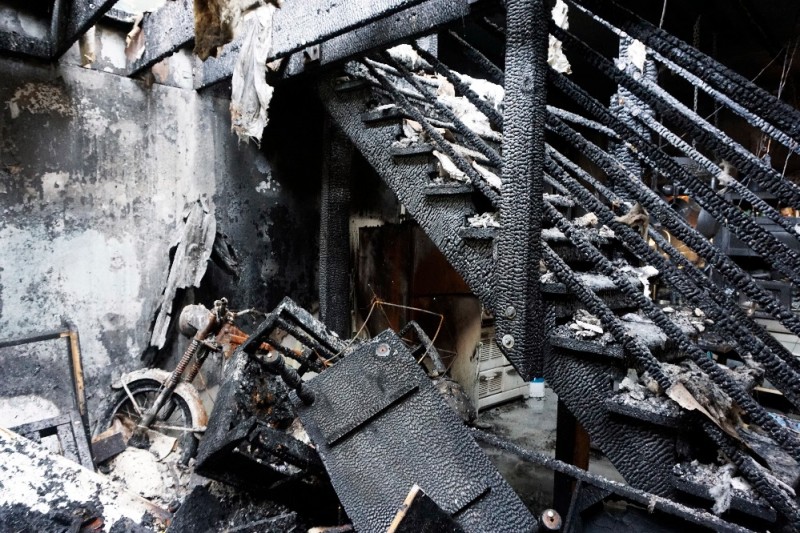
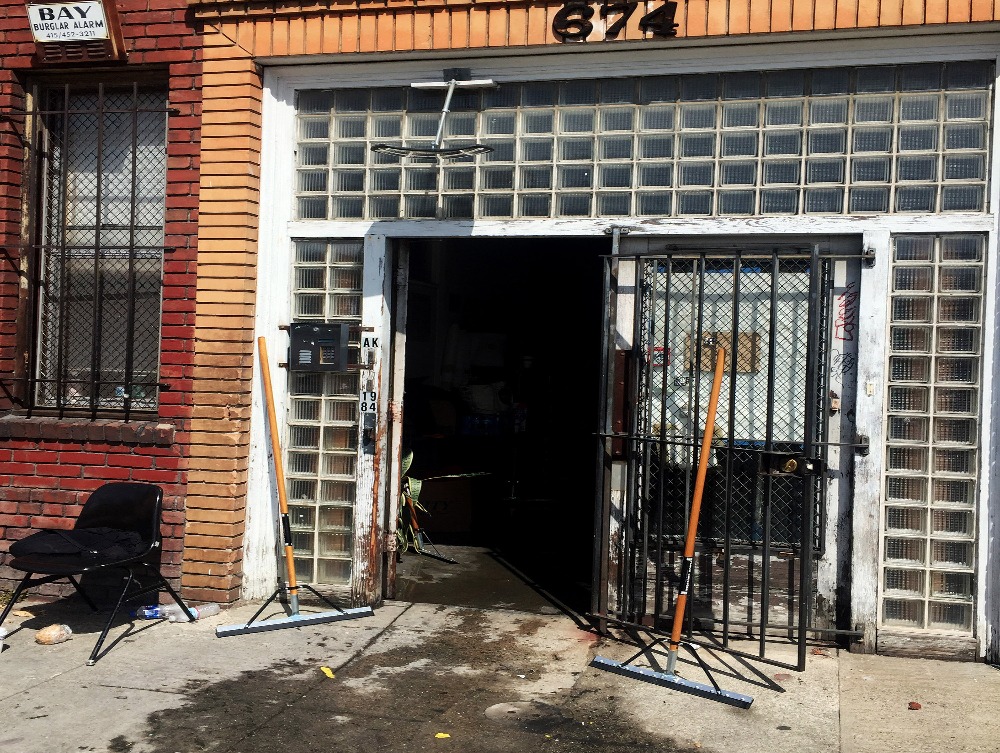









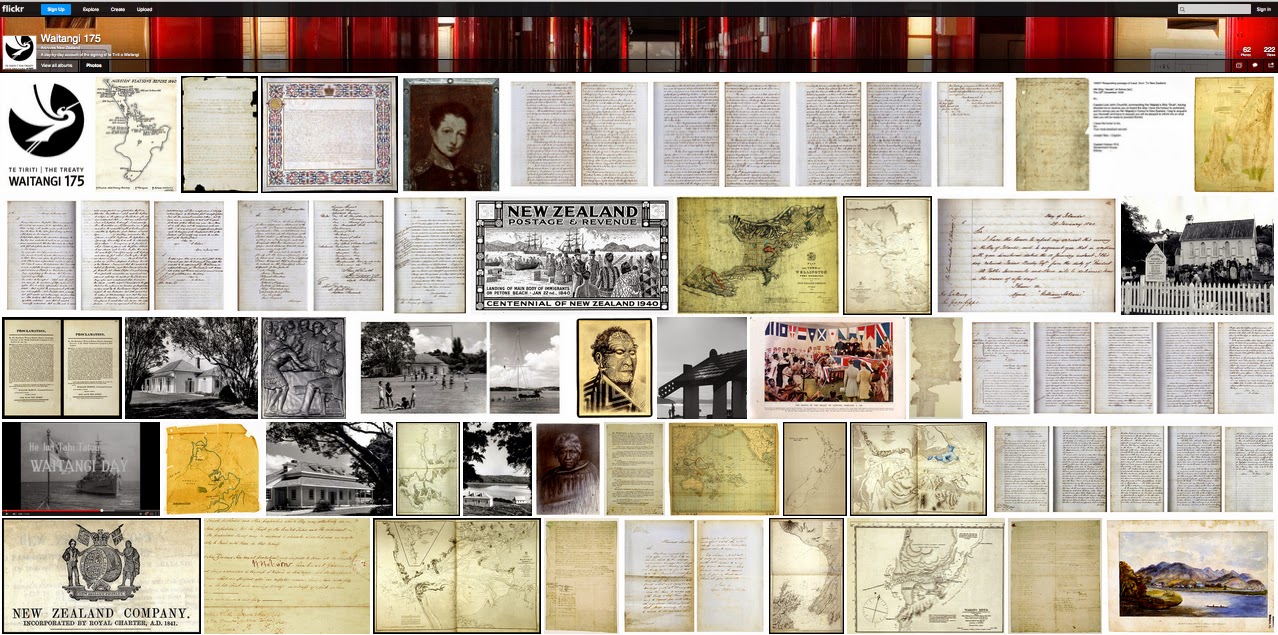

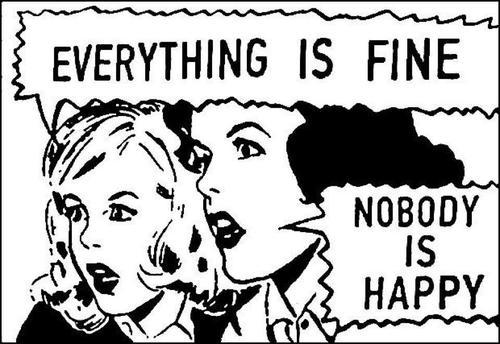


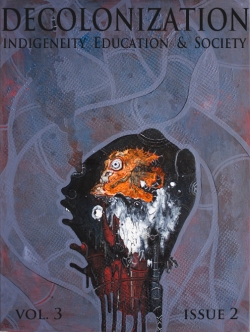





Despite agreeing with much of the text, I guess what jarred me was the feeling that it was too black and white, and I couldn’t tell if the Situationist quotes were for real or satire. I think what Olly says about certain types of work leading to further investment in ‘the system’ is spot on. To be aware of the contradictions in our work, and to know how our work reproduces capital, is the first step in challenging and ending that work.
But if I understand what this text suggests, it is that we should aim our struggle towards particular jobs. Olly points out the flaws of this approach, yet it still reads as if certain jobs have more potential for class struggle over others.
I feel this is problematic. It makes me think of those who argue that Auckland should be the main place of struggle, because that’s where the biggest employers are. Or that the online financial sector should be the place of struggle, because that is where the finance sector operates.
Playing havoc with the economy or the financial sector might bring down the economy or the financial sector, but this is not the same as ending capitalism. As we know, capital is not a place, but a social relationship. Thinking about where this relationship might best be ruptured is useful, but trying to pinpoint exact locations of struggle is extremely difficult and possibly a distraction from a broader, collective approach.
Yet it is clear that certain work changes the way we relate to others, as Olly points out. This division of labour, or the divisions between ourselves, is super important – even more so now that many people do not identify as workers, or as a class (this might not be such a bad thing, depending on your point of view, but that is another discussion altogether).
However most people can relate to discussions about work; to the day-to-day content and activity of their jobs (waged or unwaged). I think this is a potentially fruitful way forward for those of us who wish to end the wage relation. Rather than spending time raising the ‘class consciousness’ of our peers in an abstract sense, we can get to the heart of our work, and how we reproduce capital.
Feminist and marxist, Iris Young, talks about how the division of labour may be a more useful way forward than that of class. In ‘The Unhappy Marriage’ she writes that “the division of labour operates as a category broader and more fundamental than class. Division of labour, moreover, accounts for specific cleavages and contradictions within a class… [it] can not only refer to a set of phenomena broader than that of class, but also more concrete. It refers specifically to the activity of labour itself, and the specific social and institutional relations of that activity.” She goes on to talk about how this might speak to the role of professionals – ie the subject of Olly’s text.
I find this approach helpful, because it makes clear that all work reproduces the wage relation – whether you’re an academic, information worker, or a kitchen hand – and that struggle around the activity of work is potentially more fruitful than trying to pinpoint which jobs are best to spend energy on.
In other words, what might be more constructive is to discuss the ‘what’ and ‘how’ of struggle against the wage relation, wherever that struggle may be, rather than focusing on ‘where’.
This relates to another aspect of this text I find troublesome. It feels like another anarchist text policing individuals within the movement for their decisions. It seems to place a lot of emphasis on the role of the individual anarchist. I get this, because that is what we can relate to in our own lives and our own organising, as anarchists. But this does not strike me as a way forward, but a further step inward.
Olly clarifies that we need a collective response to this on Redline, which is cool to hear.
Finally, I don’t agree with the ‘poverty of everyday life’ comment of Olly’s. Struggle around our everyday life is a must, but poverty often begets more poverty, and not struggle. I don’t like what this leads to (even if it is unintentional) – that the worse off people’s jobs are, the more they will struggle against it. If anything, history has shown that struggle on a collective scale tends to take place when things are good or improving for workers (a huge generalisation, I know).
I’m not sure if what I’m trying to say makes sense. I guess the short of it is that the potential for mass, collective struggle against the wage relation (and work) is all around us. We don’t need to narrow that to a particular type of work, especially when there may be important sites of struggle that is neglected in doing so. For example, could capital reproduce itself without childcare and daycare centres? I’m not saying this is a great example, but it is the type of question I’d love to discuss, rather than trying to monitor the further personification of capital by individual comrades.